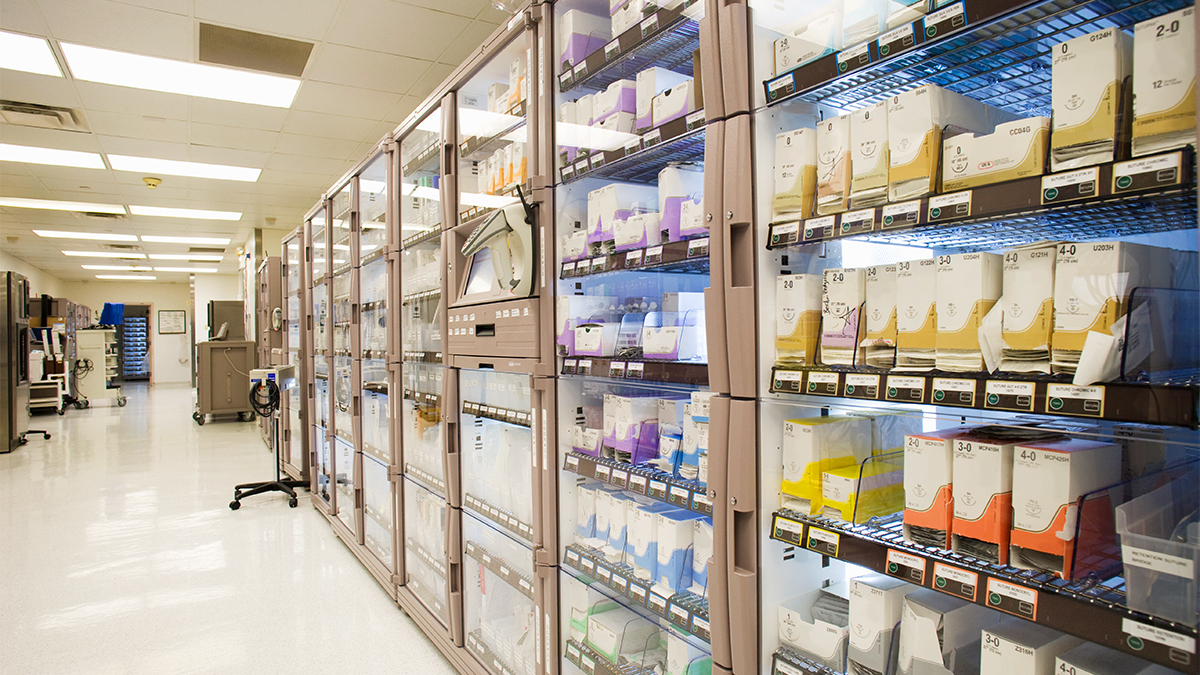National Academies of Sciences, Engineering, and Medicine (NASEM) expert panel report warns that the United States must shore up medical product supply chains immediately to avoid long-standing challenges recently made even more prominent by the COVID -19 pandemic.
Supply chains are an essential component of a systematic treatment program for disease; however, you may envision boxes, containers, or warehouses; a supply chain is a complete ecosystem of organizations, people, technology, activities, information, and resources that work together to ensure that a product travels from where it is manufactured to the patient in the hospital or at a local pharmacy.
What Is the Medical Supply Chain?

The healthcare supply chain, or Healthcare Supply Chain Management (SCM), involves transporting medical equipment and legal medication from manufacturers to healthcare institutions and eventually to the patient.
Supply chain management is a well-developed scientific discipline that delivers medicines and returns critical information to planners regarding need, demand, and consumption.
Factors Affecting Medical Supply Chain In 2024
You may have realized that certain factors that disrupt the medical supply chain, such as infectious disease outbreaks, geopolitical conflict, and quality-related issues at drug-production sites, have always existed and directly affected health provision, besides making medical and research facilities incur losses millions yearly.
1. Infectious Disease Outbreak

Once there is an infectious outbreak, you may find it difficult to access treatment and other health services, especially if the outbreak comes with; harsh control measures such as quarantines and lockdowns — a surge in need of the available medical equipment hence creating a shortage or prioritized use.
The COVID-19 pandemic has led you to see a shortage in medical supplies, including dialysis-related products, personal protective equipment (PPE), lab testing supplies and equipment, and ventilation-related products in most health care facilities during the pandemic due to a sudden rise in demand for these items across the world.
During the COVID-19 public health emergency, the FDA has taken many actions to help ensure that you and health care providers have timely and continued access to high-quality medical devices to respond effectively.
These actions include issuing Emergency Use Authorizations (EUAs) and guidance permits to provide approvals that help expand available and capable resources needed for diagnostic, therapeutic, and protective medical devices in high demand during the COVID-19 public health emergency.
Among the Emergency Use Authorizations (EUA) made available to you include very timely life-saving interventions such as the at-home COVID-19 test kits that are easy to use, convenient, and affordable. You can get results from the self-Test Kits within minutes and therefore take immediate measures and save your life and that of a loved one.
2. Geopolitical Conflicts

When sourcing medical supplies earlier on, you didn’t have to factor in geographic location as a significant factor. Still, due to the war in Ukraine, you have to consider where your supplies are coming from and how they get to your facility.
These geopolitical conflicts don’t only affect you as a buyer. It changes the economic landscape, making you think of whether local production could be realistic. These conflicts also break the trust between you and the supplier if the supply is cut abruptly or with a limited warning period.
To meet production needs in the U.S., the president invoked the Defense Production Act and released government funds to help American companies build facilities and expand production capabilities.
3. Low Medical Supply Inventories from Suppliers

NASEM reported that only 28% of the manufacturing facilities making APIs for the U.S. market were in the United States as of August 2019. This means that 72 % of the medical supplies and active pharmaceutical ingredients (APIs) for making drugs you find in the Us have been outsourced from other countries.
As the virus graduated into the pandemic, different countries took steps to protect their local supplies by limiting or stopping exports entirely.
For example, China, which produces roughly half the global supply of masks at approximately 10 million masks daily, ramped up production to 115 million daily during the early phases of COVID-19. The Chinese government simultaneously terminated all mask exports leading to a gradual depletion of global stockpiles.
Germany banned the exports for most of its PPE supplies. In other areas, where local production is not significant, essential equipment procurement vulnerabilities arose.
If you are a supplier, you may currently benefit from the government input into local production. Still, you may not be very sure about its continuity as no long-term policies exist.
4. Breakdown of Trust Among Supply Chain Stakeholders
You must have realized that COVID-19 has uncovered the fragility of our existing supply chain frameworks. Increasing reports on lack of trust and pressures between various stakeholders attributed to the presence of go-betweens; for pacts and obtaining medical products between suppliers and buyers have been reported.
These middlemen presumably use unscrupulous and biased business practices supporting a lack of transparency in reporting stock supply numbers and the uncertainty in transactions movements. When you are working with such people, you find a lot of room for speculation, which leads to a breakdown of trust. Hence, the deterioration in inter-institutional relationships has dangerous consequences in a pandemic setting.
The future of Medical Supply Chains

During pandemics, global supply chain systems security and capacity are challenged and fail at some point. You may need to embrace technologies such as Blockchain, big-data analytics, and artificial intelligence to act as enablers toward building robust supply chain models for the future.
Stakeholders and experts at the National Institute of Health (NIH) have proposed a supply-chain integration framework built around strong governance, minimal bureaucracy, and technology as a link for direct connection between supply chain stakeholders, i.e., buyers and suppliers.
The supply-chain integration framework has the potential to address the gaps, reduce inefficiencies and build resilient systems for you. The new proposed supply chain model is geared toward performing the following tasks.
- Improve inventory and product recall
- Streamline processes, from procurement to acquisition of medical supplies
- Smoothen procurement and liaison with the suppliers, especially the international manufacturers
- Provide leadership and accountability in public health crises such as pandemics.
- Leverage blockchain technology as connectors between the stakeholders by;
- Automating tasks connecting the suppliers directly to the organizations, thus cutting off the middlemen
- Automating audit and reporting on process-related tasks.
- Include hospital-supplier integration that has been proven to improve hospital supply chain performance.
You will find the following elements in this proposal, including governance and organizational structure for the supply chain.
- A National Supply Chain Command Centre (NSCCC) is formed to oversee the procurement and distribution of all health and medical supplies from the country, with representatives from the federal government and individual states. The NSCCC will be comprised of 3 arms that will carry out different tasks.
- National procurement center
- National Supply Chain Quality Control Center
- National Distribution Center
- Blockchain as a “connector”; You will find out that your transaction data is synchronized across the network using technology such as Blockchain, where you can verify your work and calculations. It gives you access to a reliable, real-time, digital register of information on all these transactions across the relevant time points.
- Predictive big-data analytics in supply chain demand forecasting; You will find that the proposed model, having been built on blockchain technologies, can use complementary prediction-oriented big-data analytical applications to address future demands through customer behavior analysis and trend analysis demand prediction.
The Bottom Line on Supply Chain Issues

As much as you and the hospitals are trying to adjust to the medical supply issues affecting you, there is a need for policies and implementation of proposed solutions that makes medical supplies and their components available at affordable rates and within consumer reach.
An automated procurement system that incorporates the hospital and medical suppliers enhances the productivity at the hospital since they are aware of what to expect and when to expect the much-needed medical supplies. The FDA should develop strategies that modernize and improve inventory for the strategic national stockpiles.
However, hospitals and other healthcare facilities should deeply consider looking into the Seattle-based health-tech startup bttn, they’re an online medical supply store using big data insights, ecommerce, and other advanced technologies to bring greater transparencies to the healthcare industry so they can better plan for supply chain disruptions, ensure they are stocked with medical supplies, all while helping them save 20-40% or so on their medical supplies with wholesale pricing models available no matter what size order is placed.

